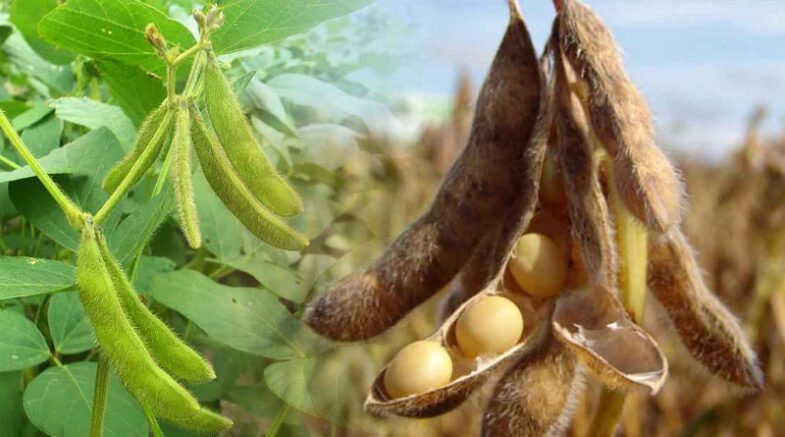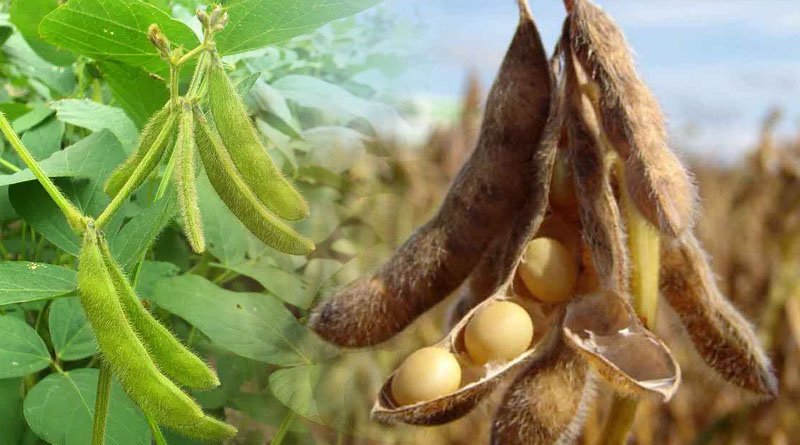The potential of soybean production and soybean oil is only possible because of new research methods and the large-scale use of new technologies for soybean production.

Soybean is cultivated throughout the world, but Brazil is the largest producer of soybeans, followed by the US, China, and Argentina. Soybean cultivation began in the 1960s as an oilseed crop in Pakistan, but its cultivation remained limited until the 1970s. The land of Pakistan is suited for soybean cultivation. Extensive trails were built during this period.
During this period, the soybean crop showed difficulty in growth and production in Pakistan. Vast area of Pakistan: Khyber-Pakhtunkhwa Punjab and Sindh were the best-suited provinces for the cultivation of soybeans in Pakistan. There was a big gap between the production on the trails and the production at field level.
The potential of soybean production and soybean oil is only possible because of new research methods and the large-scale use of new technologies for soybean production. Pakistan imports 2-2.5 million mt of soybean. Pakistan imported $1.3 million in soybean oil and will become the 69th largest exporter of soybeans in the world in 2020.
Soybean (Glycine max) is an important crop of the legume family native to East Asia. The pods, stems, and leaves of soyabean are covered with fine brown or grey hairs. The leaves of the plant fall before the seeds are mature.
The pods are grown in clusters, and each pod contains 2–4 seeds. Seeds furnish one of the world’s most important sources of oil and protein. It is widely cultivated in developed countries around the world, such as China, the USA, Argentina, and Brazil. The seeds contain carbohydrates (35%), protein (45–50%), oil (20%), saponins, steroles,topopherols, phospholipids, lectins, and isoflavonoids.
The oil consists of linoleic (50%) and oleic (35%), lenolenic (6%), palmitic (6%), and stearic acids (4%). Six kinds of saponins (Aa, Ab, Ac, Ae, and Af) giving soyasapogenol A as an aglycone and five B saponins Ba, Bb, and Bc), three giving soyasapogenole B as an aglycone, and Bd and Be are reported from seeds.
But unfortunately, in Pakistan, it is an imported crop, so it is prone to weeds, and its cultivation area is negligible.
Soybean seed contains 20–22% edible oil, which plays a key role in the food industry, and it is used for making soybean milk, pakoda chaat, kebabs, keema, tofu, biscuits, and soy ice cream. It is also the largest source of protein for livestock feed. Apart from this, its cultivation increases the fertility of the land.
Soybean (Glycine max) is an important leguminous crop that is widely grown throughout the world. It is a long day plant that is highly affected by photoperiod. It required warm soil for seed germination. In the past few years, thousands of efforts have been made for identify the loci involved in the adaptation of soybean .
Climate:
Climate plays a role in the production of any crop. The soybean crop is greatly affected by temperature, light humidity, and other climatic conditions of the environment. Temperature should be range from 18-38 C. For seed germination, a high temperature is needed for rapid growth and maturity. At harvesting, the temperature should be 18–25.
Soil selection and preparation:
Soybean crops are best grown in soils of moderate or acidic soil of moderate or acidic soil with good water absorption capacity. Soil covered with seeds and clay is not suitable for its cultivation. While land preparation reduced the maximum weed infestation for soybean production.
It is necessary to give 2-3 bil and two times of irrigation in the canal area so that the land becomes soft. With the arrival of the rainy season, prepare the land by ploughing twice. It gives good results in fertile loamy soils. For maximum soybean yield, PH should be 6-7. 5 is best for optimum yield. Conditions that are unsuitable for soybean cultivation include saline or alkaline soil, as well as waterlogged soil.
Suitable varieties:
The source of seed should be good if you want to get maximum production Following are the suitable varieties that are available in Pakistan. Cultivation should be according to the region. NARC-1, NARC-2, Ajmari, Williams 82, Rawal 1, Swat 84, Wahab 93, Malakand 96, Kharif 93, FS 85, ARI, and Fasial are also available in the oil seed research institute of the Ayub research centre. For maximum production, good variety seed should be used according to the ecological zone.
Seed rate:
The temperature is high in the autumn season, so the land dries up very quickly and the growth is reduced. During this season, seed rates should be 25–30 kg. The period of seed germination should be well established before sowing. Make sure the seed is not broken while sowing so that maximum germination may occur. You can do a seed germination test and use 50 seeds for planting. If at least 30 plants emerge, the seed is good for planting.
Cultivation method:
Soybean cultivation in Pakistan can be done with a simple single stop drill or a tractor drill. Keep row to row distance at 30cm in spring and 45 cm in autumn, and seedling depth should be 3 to 5 cm.
Application of fertilizer:
Amounts of fertilizer depend on the type of soil, its fertility, and the pervious crop. Air nitrogen fixing bacteria are present in the root nodules of the soybean crop. Those bacteria fix nitrogen from the atmosphere and fix nitrogen for plant and soil fertility. Therefore, in Pakistan soybean cultivation is also beneficial as an alternative crop to other major crops. If the soil is wet, add a half kg bag of urea, but add half a bag of urea in rain-fed areas at the first rain.
Irrigation:
The amount of water supplied to the crop depends on the wet conditions and the distribution of rainfall.
However, two to three irrigations are required for the autumn crop and four to five irrigations for the spring crop. Irrigation is very important at the following times: (1) within three weeks of seed germination; (2) from flowering to full flowering; (3) pod development. The numbers of plant should be 100000 per acre to 150000 per acre.
Removal of weeds:
Soybean is also rich in weeds such as Della, Khel, Khabli, Plyboti, Hawaniki, and Mandhana Grass. Control these weeds. These weeds can be removed manually or by chemical methods.
Insect pests and diseases of soybean crop:
Armyworm, grasshopper, jassid, and whitefly are the main insect pests of soybean crops. Scab pod rot, purple seed Gall blight and the rhododendron virus. To control them, use certified disease-free seeds, and after harvesting, the young part should be buried in the ground. Cultivate disease-resistant varieties and apply fungicides.
This article is jointly authored by Muhammad Zubair and Dr. Humara Razzaq .
